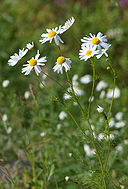NUTRACEUTICAL
Astaxanthin
Astaxanthin is a red-colored carotenoid found in algae and crustaceans (shrimp, crab, lobster). It is known for its antioxidant functions and commonly used in eye, skin, and joint health supplements.
Biotin (Vitamin B7)
Biotin is one of the many water soluble B vitamins. It is used to support hair, nail, and skin health.
Bromelain (pineapple enzyme extract)
Bromelain is an enzyme extracted from the stem and fruit of the pineapple plant. It is a proteolytic enzyme used to support digestion.
L-carnitine
Carnitine is a molecule in the body used for energy production. It can be produced by the body from lysine and methionine or obtained from diet.
Chondroitin
Chondroitin is a component of cartilage, which helps to cushion the joints. As a result, supplements may provide benefits in joint health. It is generally derived from shellfish and commonly used together with glucosamine.
Coenzyme Q10 (CoQ10, ubidecarenone)
CoQ10, commonly referred to as ubiquinone, play an important role in the mitochondria, helping to generate energy for the body. It can also act as an antioxidant to reduce the free-radicals that damage the body. Supplement in CoQ10 is thought to benefit mitochondrial and heart health and can be sourced from animal or plant products. It has also been suggested that CoQ10 can reduce the muscle breakdown and pain associated with statin therapy
Creatine
Creatine is an amino acid found mainly in muscles used as a supplement to help support athletic performance and overall strength.
Dehydroepiandrosterone (DHEA)
DHEA is a steroid hormone precursor to make male and female sex hormones. DHEA levels decrease as people become older. Supplementation is used to support hormonal balance and reduce depression
Folic acid (folate, vitamin B9)
Folic acid is an essential B vitamin used to reduce the risk of neural tube defects in the developing fetus during pregnancy. The NIH recommended dietary allowance is 600 mcg DFE folate for pregnant women. ACOG recommends to supplement with a daily prenatal vitamin that contains at least 400 mcg of folic acid.
Glucosamine
Glucosamine is a component of cartilage, which helps to cushion the joints. As a result, supplements may provide benefits in joint health. It is generally derived from shellfish and commonly used together with chondroitin.
5-Hydroxytryptophan (5-HTP)
5-HTP is an amino acid that act as the building block for other important molecules in the body, like serotonin and melatonin. As a result, supplementation with 5-HTP is thought to reduce depression and improve sleep.
Lutein
Lutein is a carotenoid found in the macula and retina of the eye. Its function as an antioxidant helps to prevent the eyes from damage.
Melatonin
Melatonin is a hormone that helps regulates the body’s sleep cycle and circadian rhythm. It is produced in low light conditions and suppressed by sunlight. Supplementation with melatonin can help as a sleep aid and recovery from jet lag. It comes in a wide range of formulations (immediate release, extended, delayed) to help alleviate different sleeping disorders.
Methylsulfonylmethane (MSM)
MSM is a dietary source of sulfur found in plant and animal products. It is commonly supplemented together with chondroitin and glucosamine to help with joint health.
Omega-3 fatty acids
Omega-3 (ω−3) fatty acids includes docosahexaenoic acid (DHA) and (eicosapentaenoic acid) EPA and are commonly found in fish and algae oils. Many plant and seed oils contain α-linolenic acid (ALA), which can be converted by the body into DHA and EPA. DHA/EPA was shown to help lower triglyceride levels. Omega-3 fatty acids are also suggested to help reduce inflammation and provide benefit to cognitive/mental health. Supplements may contain enteric coating to reduce fishiness.
Probiotics
Common bacteria used in probiotics include those in the genus Lactobacillus and Bifidobacterium. They provide health benefit by improving the intestinal microbiota. Antibiotics can disrupt the normal gut flora, resulting in diarrhea. The consumption of probiotics can restore the microbiota and reduce the damage caused by antibiotics.
Since probiotics contain live cultures, the “beneficial” bacteria can be killed by stomach acid. This can be reduced by enteric coating formulations.
Prebiotics can also be used to improve gut flora. They help the probiotics by providing food for the good bacteria. Some common prebiotics include fructooligosaccharides and inulin.
Progesterone
Progesterone is a natural human sex hormone involved in development, menstrual cycle, and pregnancy. It is also the precursor used to produce other essential human steroids. It has many uses, not limited to hormonal therapy to replace low levels and treating menopausal symptoms.
Pyrroloquinoline Quinone (PQQ, methoxatin)
PQQ is an enzyme cofactor, like CoQ10. It is found in food and act as an antioxidant. It is suggested to help improve mitochondrial, heart, and cognitive health. As a supplement, it is commonly found together with CoQ10 and can be sourced from plant products.
Resveratrol
Resveratrol is a compound found in many berries (commonly grapes). It acts as an antioxidant and has been suggested for anti-aging properties.
Red Yeast Rice
Red yeast rice is a fermented rice with lipid lowering properties. Traditionally, it was used in food products and as a food coloring agent. It may contain the compound monacolin K, which is the same as the drug lovastatin. As a result, it may cause the same muscular side effects as statins. In addition, it is likely not safe during pregnancy due to the similarities to statins.
S-Adenosyl methionine (SAMe)
SAMe is a substance produced by the body from the amino acid methionine. Abnormal levels have been suggested to contribute to depression and liver disease. Some users have also reported that supplementation resulted in improvements in their osteoarthritis symptoms. Enteric coated formulation can help reduce degradation by stomach acid.
L-theanine
Theanine is a molecule structurally similar to the neurotransmitter glutamate and glutamine. It is a compound commonly found in tea products and is thought to reduce stress and improve relaxation.
Zeaxanthin
Zeaxanthin is an isomer of lutein. It is a carotenoid found in the macula and retina of the eye. Its function as an antioxidant helps to prevent the eyes from damage.
Acai (Euterpe oleracea)
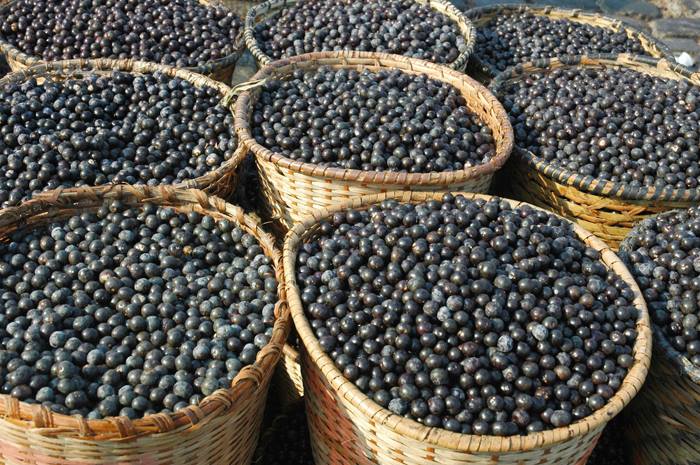
The berry of the acai tree is the applicable part of the plant and used for overall improvement to general health. It supports immune health through its antioxidant effects.
Ashwagandha (Withania somnifera)

The berry and root of the ashwagandha plant are used medicinally for overall health. It is considered an “adaptogen” due to its supposed ability to modulate stress response.
Astragalus
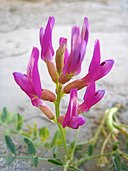
Astragalus is an herb with the root being used medicinally for overall immune support. Extracts are typically standardized to polysaccharide content.
Bilberry (Vaccinium myrtillus)

The applicable parts of the bilberry plant can include both the berry and the leaf. It contains antioxidants and is commonly used to support vision health.
Bitter orange (Citrus aurantium)

The flower, fruit, leaf, and peel of the bitter orange are used culinarily and medicinally. It is used as a stimulant to improve athletic performance, reduce appetite, and lower weight.
Black cohosh (Actaea racemosa)
Black cohosh is a flowering plant. However, its rhizome/root is the part that is used medicinally. It is commonly marketed to help alleviate menopausal symptoms such as hot flashes.
Bladderwrack (Fucusvesiculosus)

Bladderwrack is a brown seaweed with the whole plant used medicinally. It contains iodine and is used for thyroid support.
Blessed thistle (Cnicus benedictus)

Blessed thistle is similar in appearance to milk thistle with its flower with many spines. The aerial parts (flower, leaf, stem) of the plant are used medicinally. It is marketed to promote lactation and improve digestion.
Butterbur
Butterbur is a plant with the leaf and root/rhizome used medicinally for allergies and migraines. The butterbur plant contains pyrrolizidine alkaloid (PA) that is toxic to the liver. Butterbur extracts are typically processed to remove this toxic component.
Calendula (Calendula officinalis)
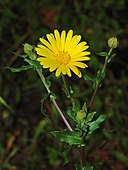
The flower of the calendula plant is used medicinally as a topical anti-inflammatory and for various skin conditions.
Chamomile
Chamomile is a flower that can be taken as a tea or supplement to help promote sleep and reduce anxiety.
Chaste tree berry (Vitex agnus-castus)
The berry and seed of the chaste tree is used medicinally. Extracts are commonly standardized to agnuside or casticin content. It is used medicinally to help alleviate menopausal symptoms by supporting hormonal balance.
Cinnamon

Cinnamon is a spice with the bark and flower used medicinally to support digestion and metabolism.
Clove
Clove is a flower with the whole plant used as a spice and medicinally to relieve oral pain and toothaches. It can also be used as a source of antioxidants.
Cranberry (Vaccinium)

Cranberry products are used to prevent urinary tract infection. It can be taken as juice or extract. Extracts are commonly standardized to proanthocyanidins.
Echinacea
Echinacea is a flower native to the United States. Both the upper plant and the roots are used medicinally. It is commonly used for immune support to help prevent colds. It is thought to work by stimulating the immune system.
Elderberry (Sambucus nigra)

The elderberry tree provides the berry that is used culinarily and medicinally. Medicinally, it is used for immune support by stimulating the immune system. This may help to prevent colds and flu.
Evening primrose oil

The seed oil of the primrose plant is rich in omega fatty acids and gamma-linolenic acid and is used medicinally to support women’s health and promote hormonal balance.
Fenugreek
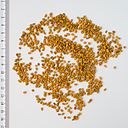
The seeds of fenugreek is used medicinally to promote overall health and lactation support.
Feverfew (Tanacetum parthenium)
The leaves of feverfew is used medicinally for minor pain and to support blood circulation.
Garlic
Garlic has a wide range of proposed uses not limited to atherosclerosis, colds, diabetes, hyperlipidemia, and hypertension. Its bulb is the main part used culinarily and medicinally. Patient on anticoagulation should use supplementation with care since garlic can increase the risk of bleeding.
Ginger (Zingiber officinale)

The ginger root/rhizome is used culinarily and medicinally. It is commonly used to prevent nausea and vomiting in pregnant women.
Ginkgo (Ginkgo biloba)
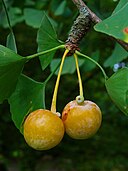
The leaf and seed of the ginkgo tree is used medicinally to support circulation and brain health. The leaf extracts are the common form and is usually standardized to flavonoid glycosides and terpenoids. The seed is used culinarily in Asia and contains a neurotoxin that antagonizes pyridoxine. Patient on anticoagulation should use supplementation with care since garlic can increase the risk of bleeding.
Goji (Lycium)

The berry and bark of the goji plant is used for overall health. The berry is a rich source of antioxidant to help support immune function.
Goldenseal (Hydrastis canadensis)

Goldenseal is an herb with the root/rhizome used medicinally for immune support to help prevent colds and flu.
Green tea (Camellia sinensis)

The leaf bud, leaf, and stem of the shrub Camellia sinensis are used to prepare the dried tea product. The polyphenols and catechins are responsible for the benefits of tea. In addition, tea contains caffeine that helps to reduce drowsiness.
Hawthorn (Crataegus)
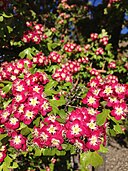
Hawthorn is a shrub with the leaf, flower, or berry used medicinally to support heart health.
Kava (Piper methysticum)

The root and stem of the kava plant are used medicinally to help support anxiety, relaxation, and sleep.
Lavender (Lavandula angustifolia)

The flower and leaf of the lavender plant are used medicinally for anxiety, mood, and sleep.
Licorice (Glycyrrhiza glabra)

Licorice is a flowering plant with the root used medicinally. Glycyrrhizin is the main active component in licorice, which is responsible for its sweet and aromatic flavoring. Glycyrrhizin also has mineralocorticoid effects, which can lead to water retention.
Milk thistle (Silybum marianum)

Milk thistle is a plant with purple flower with many spines. The useful parts of the plant are the aerial parts and seed; however, the seed is more commonly used medicinally for liver support. Extracts are standardized to silymarin content.
Passion flower (Passiflora incarnata)
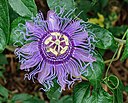
The aerial parts of the passion flower are used medicinally for anxiety and sleep.
Peppermint (Mentha x piperita)

The aerial parts of the peppermint are used medicinally for digestion and nausea.
Rhodiola

The root/rhizome of rhodiola are used in traditional medicine. It is considered an “adaptogen” due to its supposed ability to modulate stress response.
Saw palmetto (Serenoa repens)

Saw palmetto is a small palm tree with its fruit used medicinally for urinary and prostate health. Extracts are typically standardized to the active fatty acid component.
Senna

The leaf and fruit of the senna plant are used medicinally as a stimulant laxative to help treat constipation. The fruit is supposedly gentler than the leaf.
St. John’s wort (Hypericum perforatum)

St. John’s wort is a plant with both the flowers and leaves used medicinally to improve mood and reduce depression; however, the flowers are more commonly used. Care should be taken when taken as a supplement as it has drug-drug interactions with many prescription medications.
Stinging nettle

Stinging nettle is a plant with the aerial parts used medicinally to treat allergies while the root is used to support prostate health.
Turmeric (Curcuma longa)

Turmeric is a plant with the root/rhizome used as a spice and medicinally. It is yellowish in color and can also be used as a coloring agent. It is used medicinally for its anti-inflammatory properties. Extracts are typically standardized to the active curcumin.
Valerian root (Valeriana officinalis)

Valerian is a flowering plant with the root/rhizome used medicinally. It is commonly used for relaxation and sleep. Extracts may be standardized to the valerenic acid component.
Yohimbe (Pausinystaliayohimbe)

The bark of the yohimbe tree is used medicinally to support sexual wellbeing.
Arnica montana

Arnica montana is herbal plant with the flower commonly used in homeopathic therapy for pain treatment.
Nux vomica (Strychnos nux-vomica)
Nux vomica is a tree with the seed commonly used for homeopathic therapy for digestion and stomach conditions.
Oscillococcinum

Oscillococcinum is a homeopathic preparation made from dilutions of extract from duck liver and heart. It is marketed to treat flu-like symptoms.


